Info
Subfamily: Pooideae
Genus etymology: Poa is the ancient Greek name for a herb of grass
Species etymology: siphonoglossa = "hollow tongue" [Greek] refering to the ligule sheathing the culm
Photosynthetic type: C3 (cool season)
Nativity: endemic
Legal status: Hawaii DLNR - Endangered
Map
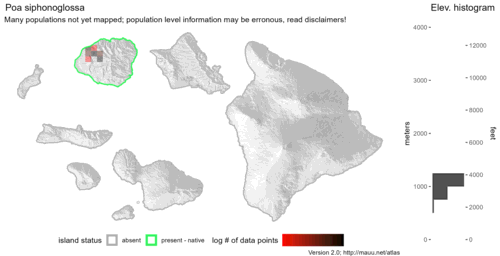
Inflorescence
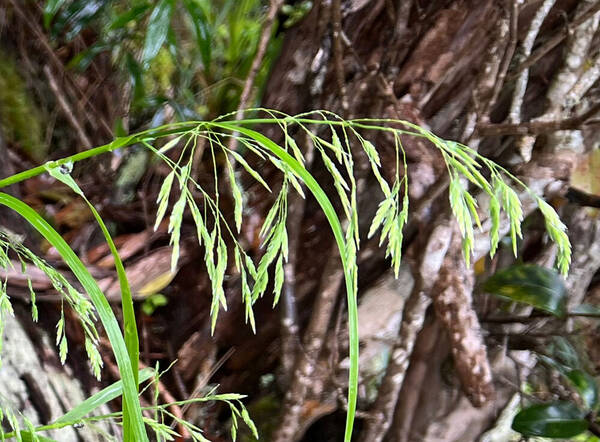 image credit: Ken Wood
image credit: Ken WoodPlant
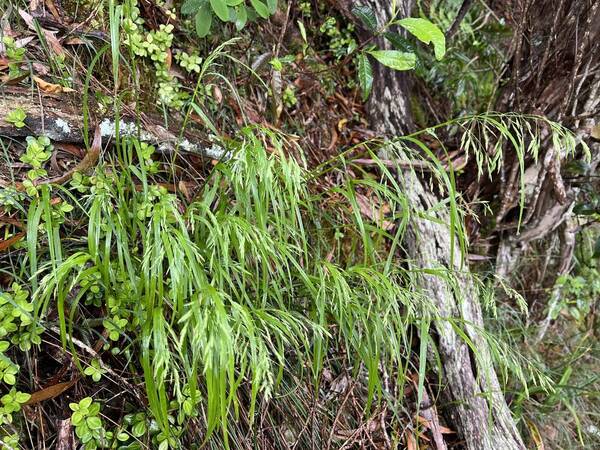 image credit: Ken Wood
image credit: Ken Wood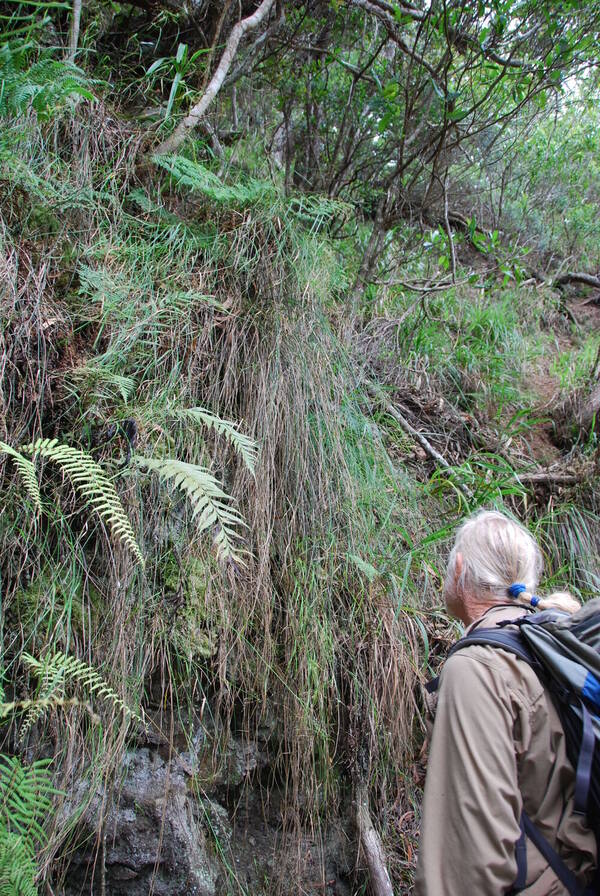 image credit: Ken Wood
image credit: Ken Wood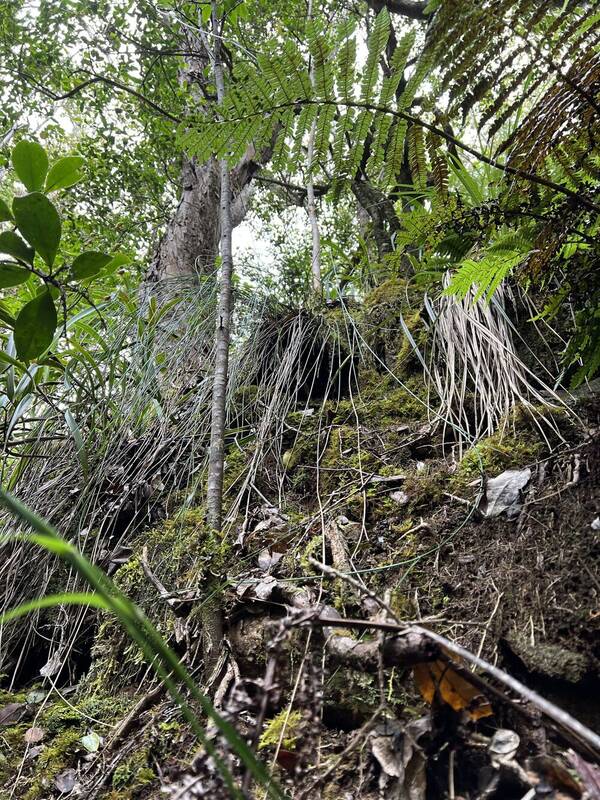 image credit: Ken Wood
image credit: Ken Wood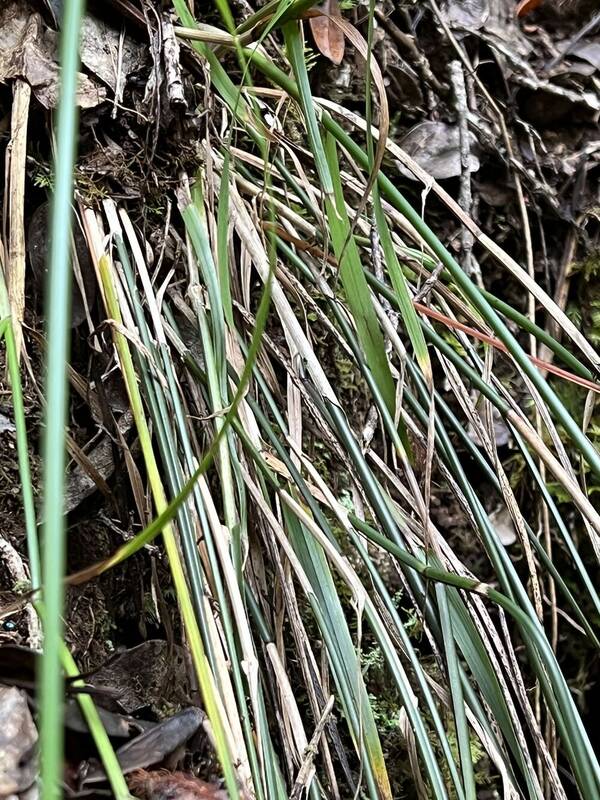 image credit: Ken Wood
image credit: Ken WoodSpikelets
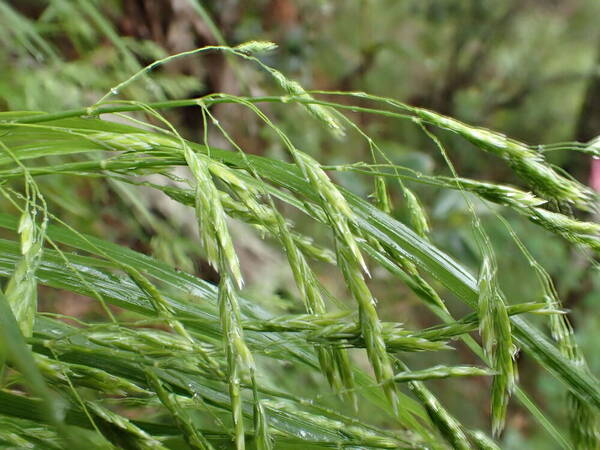 image credit: Ken Wood
image credit: Ken WoodDescription
Perennials, rhizomes short, forming a thickened culm base; culms solid, flattened, smooth, striate, tufted, the tufts often extensive, cascading from banks in long masses up to 4 m long, the old culms naked and rushlike, bearing bladeless sheaths, 1585 internodes up to 65 cm long. Sheaths glabrous, closed to the mouth, shorter than the internodes; ligule 2-3 mm long, membranous, margins dentate to erose, completely encircling the culm except where ruptured by the splitting of the sheath; blades flat, lax, usually less than 10 cm long, 2-3 mm wide, upper surface scabrous, lower surface glabrous, deciduous from older basal sheaths. Panicles ovoid, usually less than 5 cm long, primary branches 2-3 cm long, appressed to ascending; spikelets relatively few per panicle branch, laterally compressed, 2-5-flowered, 4-7 mm long, rachilla elongate, florets up to 1 mm apart, glabrous to moderately hispid; glumes slightly unequal, narrow, glabrous, 3-nerved, apex acuminate, second glume ca. 4 mm long; lemmas narrow, 4-5 mm long, keel and marginal nerves scabrous, or scabrous toward base, cobwebby hairs absent, intermediate nerves prominent; palea nearly as long as lemma, keels scabrous-ciliate, apex bifid. Caryopsis reddish brown, ovoid, ca. 0.6 mm long.
(Description source: O’Connor, P.J. 1990. Poaceae, pp. 1481–1604. In: Wagner W.L., Herbst D.R. & Sohmer S.H. (eds.)., Manual of the flowering plant of Hawaiʻi. Vol. 2. University of Hawaii Press & Bishop Museum Press, Honolulu )